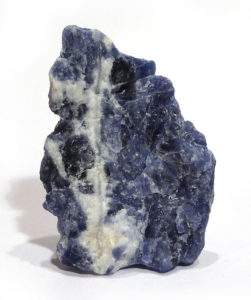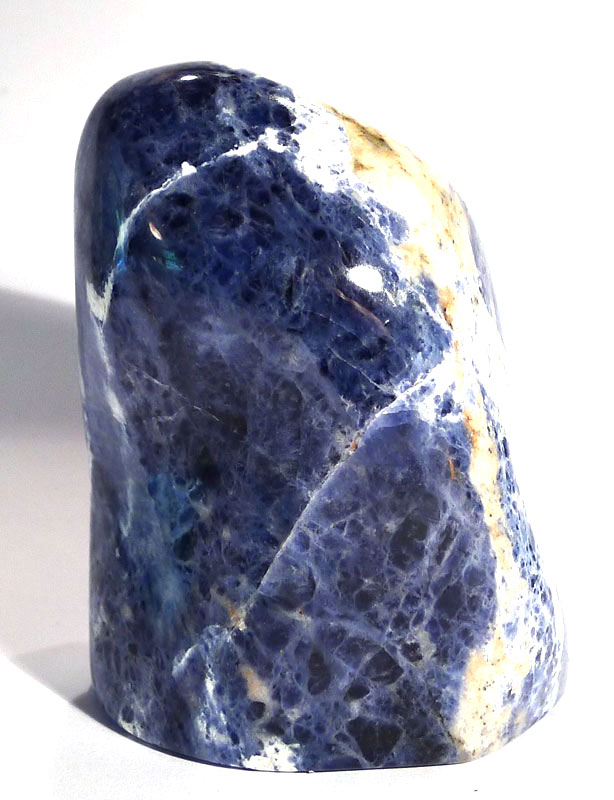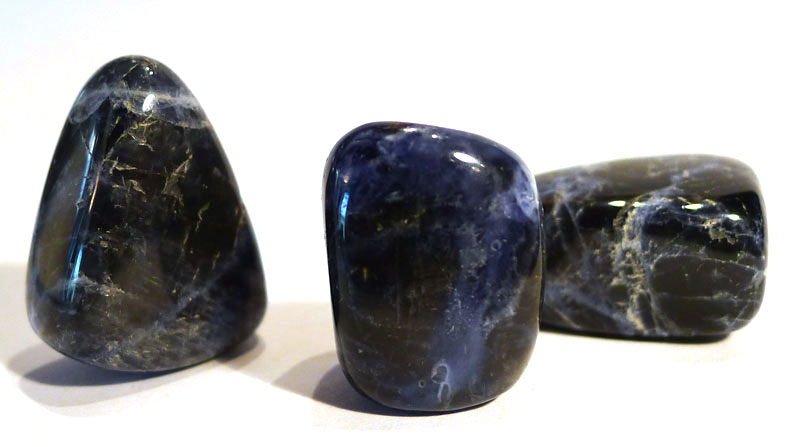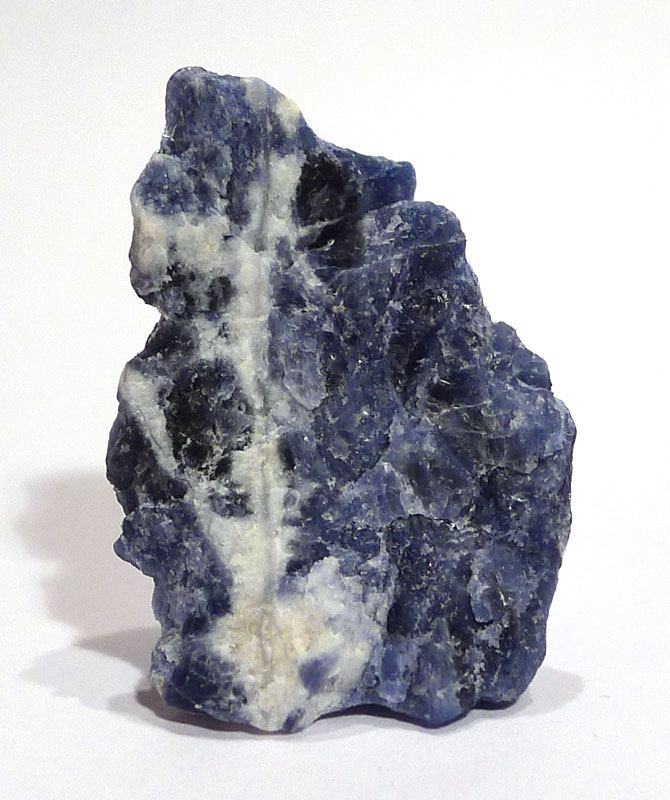Properties:
All sodalites are calming and encourage physical presence and solidity. The sodium content makes it very cleansing and clearing on every level, and it is particularly helpful in clearing illness and stress associated with the lower gastrointestinal tract. Sodalite restores equilibrium, releasing anxiety and bringing clarity of mind and a sense of calm, while re-establishing self-confidence. The deep blue variety of sodalite (most common) is extremely calming and grounding, bestows serenity, and helps one to feel completely present in the physical world and physical body. It maintains more focus on the lower chakras and physical body than other sodalites, while at the same time creating a heaven-earth connection. Its core quality is truth – the ability to “speak one’s truth”, be true to oneself, and accept the truth of a situation, even when that truth is uncomfortable. With that truth comes self-acceptance and the ability to see and welcome the person you truly are, warts and all, without judgement. Blue sodalite can be used to treat conditions affecting the throat and voice, and also releases tension and helps to clear infection in the area of the Sacral Chakra, so can be applied in the treatment of IBS and mild stomach bugs.
.
Attributes:
- Chemical Formula: Na4(Al3Si3O12)Cl
- Birthstone: Secondary birthstone for Sagitarrius
- Chakra: Throat and Root (blue)
Mineralogy:
- The name derives from its high sodium content; Sodalite was named in 1811, and there are no traditions associated with this mineral. Sodalite is a group of minerals which includes hackmanite and tugtupite as well as the better known deep blue variety. This is in reference to blue sodalite: Sodalite is a chloric sodium aluminium silicate, and rarely appears as crystals, although the system is cubic. It frequently displays veining from white calcite. Blue tones often have a slight violet tint, and it also shows black veins from oxidation. It is difficult to distinguish from Lapis Lazuli, but the tint of the blue, lack of included pyrite, and black colouration can prove helpful in identification, plus the polished material displays a slight shimmer, not present in lapis lazuli.

Save




